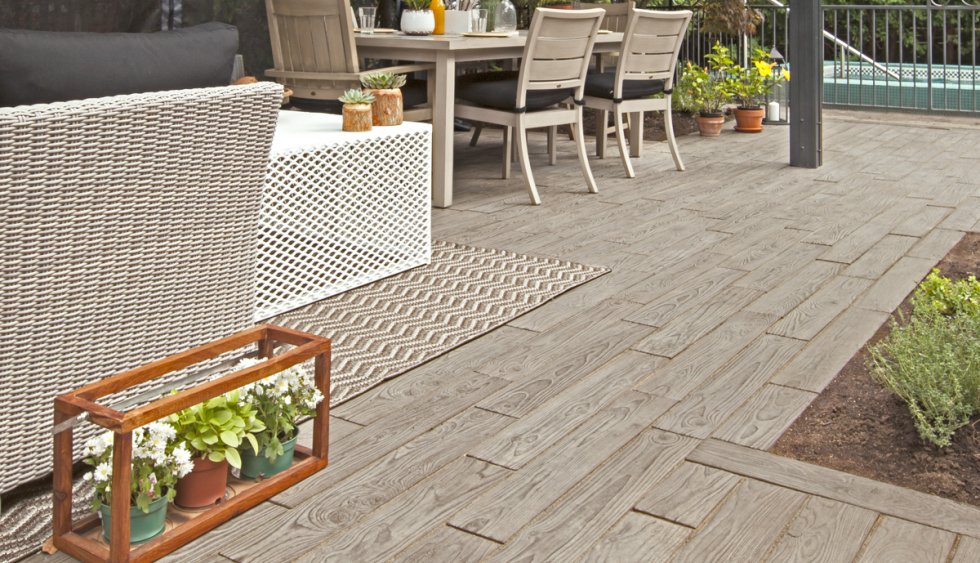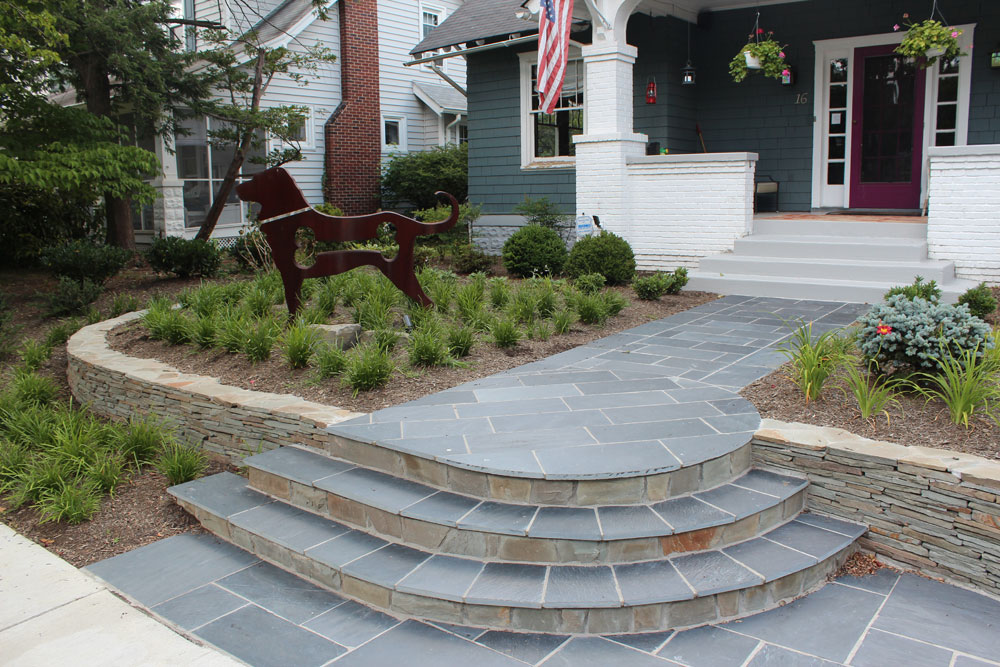Walking and standing in mud is kind of a bummer, so centuries ago people got the idea to lay stones on the ground and stand on those. Brilliant! Over the years since then we’ve had a lot of advances in technology. That means not only new manmade products, but the ability to quarry and ship natural stone products from all over the world. Here’s what you should check out for 2015.
Porcelain Pavers
Let’s not bury the lede, I was super excited when I first saw these at Sislers Stone in Falls Church. I think these will be a game changer, and here’s why:
- as a manufactured product they have a consistent 1″ thickness
- they can be dry set, they can be laid in mortar, or they can clip into a grid for rooftop deck applications
- they’re manufactured to look like natural stone or even wood
- they’re less slick underfoot than many stones so they’re good for poolside and wet areas
The cost is higher than stone or concrete pavers but not by all that much. I expect the cost to go down as more and more suppliers bring them in. Currently they’re manufactured in Europe and the folks I’ve talked to have said the availability isn’t great yet, but it’s coming. Porcelain pavers already have a demonstrated history of durability in Europe so while you may be the first person on your street to have them, you’re not running the risks that come with a new product. So if you were the second person to install Windows Vista and have been forever scarred, don’t worry. You’re with friends now.
Wood-look Concrete Pavers
These are actually a couple years old but I’m still not seeing much of them in anything but flower show displays. I think it’s because a lot of designers, installers, and homeowners haven’t yet figured out how to use them.
This is Techo-Bloc’s Borealis paver. We’re into the second generation which means that they’ve added a second size. The original size was 5″x30″, and now to add some variety they offer a 10″x30″. The obvious advantage to this over just using wood is that concrete doesn’t rot or warp or twist. The down side is that you get a busier look than you wood with wood planks, because they only come 30″ long. The projects I’ve specified these on should be installed in a few months and I’ll share pics. I use them mostly as an accent, but it’s a very cool look.
Techo-Bloc also offers a big step in the Borealis style. They’re 6″ high, 16″ deep, and 48″ wide. Why not just use 6×6 pressure-treated timbers? For one thing, rot. For another, you get actual color choices that work with your patio or walk. Also, it can be hard to secure timbers and keep them from moving unless they’re spiked to each other or pinned to the ground with 3-4′ of rebar. If I’m mathing it out right Borealis steps weigh 384 pounds each. They’re not budging.
Natural Stone
Back in the dark ages of the industry, when someone asked their flagstone options it was like that clip. “We offer Pennsylvania flagstone AND PA flag!” Now that it’s gotten strangely affordable to carve into a vein of rock in Brazil or China, load it in a container on a massive ship, and bring it here you have a crazy amount of options.
The border stone is Canyon View, a stone with multi-colored veining running though it. It’s been around the DC metro area for several years but I’m finding more and more people who want something besides the old standby of PA flagstone. While I think it would be a little intense as a full-field patio stone, It’s a cool little accent.
Sometimes if it’s an older home you want a flagstone that looks like it’s had plenty of years to weather and darken. That’s why we used Westmoreland stone on the lead walk for this gorgeous Craftsman home’s Alexandria landscape design project.

There are also loads of other flagstone options now. Photos don’t do them justice so if you’re looking for ideas I’d suggest seeing them in person. In the DC area two great locations are Sislers Stone and Luck Stone Center. Down here if you’re working on a Culpeper landscape design project, A.B. Kearns is our go-to stoneyard.
Choosing the right paver or stone for your patio
Given all these choices, how do you even begin to narrow it down? The way I do it is I work from style, to color, to budget. Get a sense of the look I want, pick the color palette, and then determine what solutions work within my budget. Your local stoneyard’s sales staff will be happy to help you, or you could hire your very own Virginia landscape designer! However you choose to get your patio project done, the choices for materials are amazingly varied. Explore your options and create something that’s uniquely YOU.







Leave a Reply